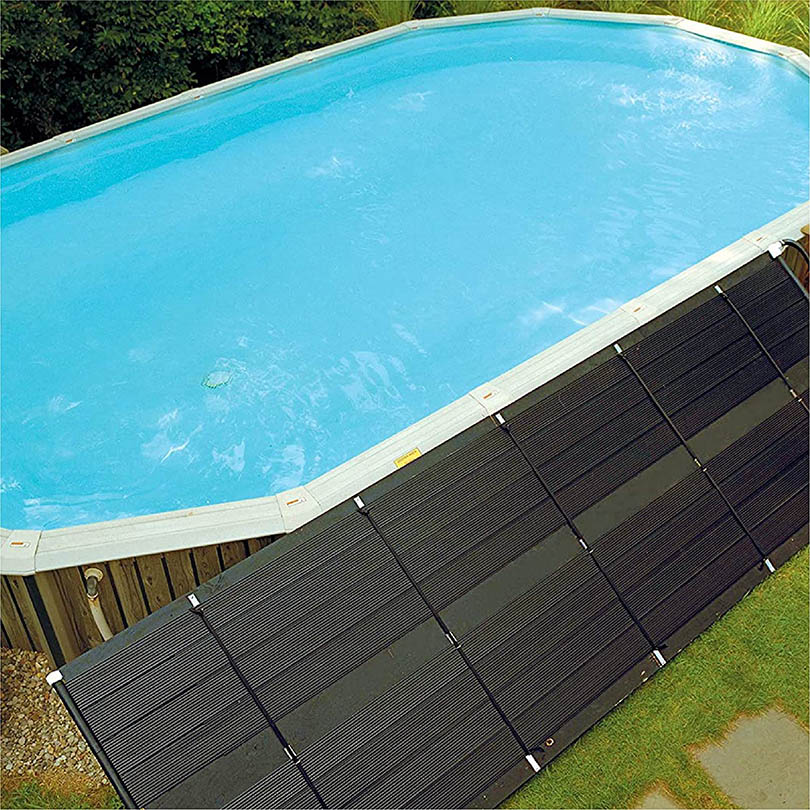Do you usually locate yourself wanting to go for a good and refreshing swim, but the instant your toes touch the pool, the freezing h2o stops you from diving all the way in? If so, you’re not the only a single. One of the best and most ecological solutions to this dilemma is to get a photo voltaic pool heater.
As clean power turns into a lot more common, far more and more family items have begun to operate in an electronically or sustainably helpful way and solar pool heaters are no exception. Given that they are a comparatively new technologies, we’ll clarify how they operate and support you determine if they are an successful and feasible device for your house.
What Is a Solar Pool Heater?
A solar pool heater works just like a normal pool heater, the major difference is that it is driven by photo voltaic vitality.
As a consequence of these products currently being photo voltaic-run and sustainable, they have enjoyed a enormous rise in recognition. They drastically reduce pool servicing fees and also support minimize pollution on the atmosphere. Pool heaters are a viable choice in nearly any atmosphere, but they’ll admittedly work more successfully in hotter climates.
Due to the fact there are numerous types of photo voltaic pool heaters—your regional location, the weather, the expense, your roof, and even how you use your pool—it’s crucial to consider these into account when determining no matter whether this is the very best sort of heating method for your poo

How Does a Solar Pool Heater Work?
Most photo voltaic pool heaters include the pursuing components:
- Solar Collector: This is one of the main parts of the system, tasked with collecting and heating cold water. Normally, solar collectors are flat shaped and placed on the roof of the building the pool belongs to.
- Filter: Before the water moves on to the collector, it must first be cleaned with the help of a filter, which collects all of the debris/dirt.
- Pump: The pump provides the energy for the water to circulate through the entire system.
- Flow Control Valve: As its name suggests, this part has the task of controlling how much water goes through, making sure the collector does not overflow. It can work both automatically and manually.
- Sensors: To send the signals needed for the system to work properly, sensors are put in place to detect everything.
The process commences when water is pumped into the photo voltaic collector. Although flowing into the collector, all of the h2o goes by way of the filter, leaving driving all particles and dirt. The solar collector will get edge of all the sun’s warmth and warm the h2o while it slowly flows via. When the h2o is heat enough, it will circulation back again to the pool.
In the course of the warm summer time months, the drinking water heater can perform the precise opposite way and preserve the pool´s h2o cool by doing the procedure at evening, fairly than throughout the day.

Glazed vs. Unglazed Collectors
If you´re preparing to use your collectors in chilly temperatures, glazing them will permit them to perform more successfully. This process will help defend your device from the chilly and traps the warmth. The only downside is that glazed collectors come at a little bit of a greater price because of to some of the supplies required, like copper and aluminum. This program can also be employed to warmth domestic h2o throughout the complete yr.
Unglazed collectors are produced out of a blend of rubber and plastic, they work perfectly in warm temperatures, but as opposed to glazed collectors, they do not consist of a glass coating. They do, nevertheless, include a UV gentle inhibitor to broaden their valuable lifestyle.
No matter of which sort of collector you have, they the two need to have some type of freeze protection.
Efficiency
A solar collector´s efficiency is measured in BTU (British Thermal Device) for each sq. foot. The average output for each collector is all around 900-1,000 BTU for each sq. foot, but the common can range. The greater the quantity, the greater the performance.
The typical price for a solar collector is anyplace among $2,000 -$four,000 and can previous up to 20 many years, seldom requiring servicing. This could confirm to be a wise investment decision, as you could perhaps recuperate your investment as swiftly as a single yr soon after buying it, relying on how significantly you use it and what your electric power bills ended up like beforehand.
The average distinction of temperature in between a heated and an unheated pool in summer time is around 8-12°F and in winter the distinction is even even bigger, even more so with glazed panels. It’s crucial to note that heating a pool normally requires close to 1 week, so preparing ahead is essential.

Pros and Cons
Though photo voltaic pool heaters offer you some exceptional advantages, they might not be ideal for everyone.
- A cheap solution to pool heating
- Environmentally sustainable
- Lasts up to 20 years
- Requires very little maintenance
- Requires about 7 days to heat a pool
- It is not a space-friendly solution
- Heavily relies upon the sun
- Heating can be lost quickly
Though they are very new, photo voltaic pool heaters are previously one particular of the ideal goods for pool heating in the market place. The amount of vitality and cash they can conserve while heating your pool is fairly outstanding, as prolonged as you have the forethought to get it operating 1 7 days just before your up coming dip! If you want your pool to be hotter without polluting, a solar pool heater is a best option for you.
Highlighted Graphic Credit history: Vinicius Bacarin, Shutterstock
Contents
